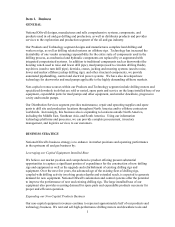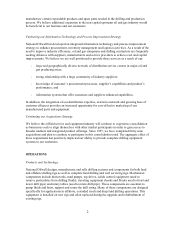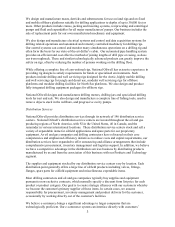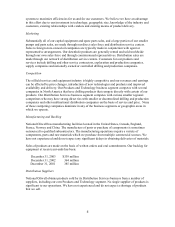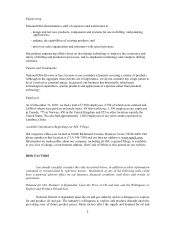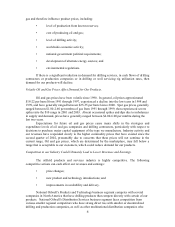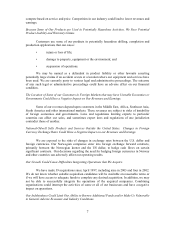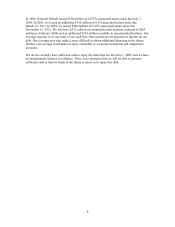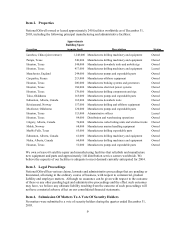National Oilwell Varco 2003 Annual Report Download - page 7
Download and view the complete annual report
Please find page 7 of the 2003 National Oilwell Varco annual report below. You can navigate through the pages in the report by either clicking on the pages listed below, or by using the keyword search tool below to find specific information within the annual report. 6
gas and therefore influence product prices, including:
• level of production from known reserves;
• cost of producing oil and gas;
• level of drilling activity;
• worldwide economic activity;
• national government political requirements;
• development of alternate energy sources; and
• environmental regulations.
If there is a significant reduction in demand for drilling services, in cash flows of drilling
contractors or production companies or in drilling or well servicing rig utilization rates, then
demand for our products will decline.
Volatile Oil and Gas Prices Affect Demand for Our Products.
Oil and gas prices have been volatile since 1990. In general, oil prices approximated
$18-22 per barrel from 1991 through 1997, experienced a decline into the low teens in 1998 and
1999, and have generally ranged between $25-35 per barrel since 2000. Spot gas prices generally
ranged between $1.80-2.60 per mmbtu of gas from 1991 through 1999, then experienced severe
spikes into the $10 range in 2001 and 2003. Absent occasional spikes and dips due to imbalances
in supply and demand, prices have generally ranged between $4.00-6.00 per mmbtu during the
last two years.
Expectations for future oil and gas prices cause many shifts in the strategies and
expenditure levels of oil and gas companies and drilling contractors, particularly with respect to
decisions to purchase major capital equipment of the type we manufacture. Industry activity and
our revenues have responded slowly to the higher commodity prices that have existed since the
second quarter of 2002, presumably due to concerns that these prices will not continue in the
current range. Oil and gas prices, which are determined by the marketplace, may fall below a
range that is acceptable to our customers, which could reduce demand for our products.
Competition in our Industry Could Ultimately Lead to Lower Revenues and Earnings.
The oilfield products and services industry is highly competitive. The following
competitive actions can each affect our revenues and earnings:
• price changes;
• new product and technology introductions; and
• improvements in availability and delivery.
National Oilwell's Products and Technology business segment competes with several
companies in North America that have drilling products that compete directly with certain of our
products. National Oilwell's Distribution Services business segment faces competition from
various smaller regional competitors who have strong direct ties with smaller or decentralized
drilling and production companies, as well as other multinational distribution companies who


